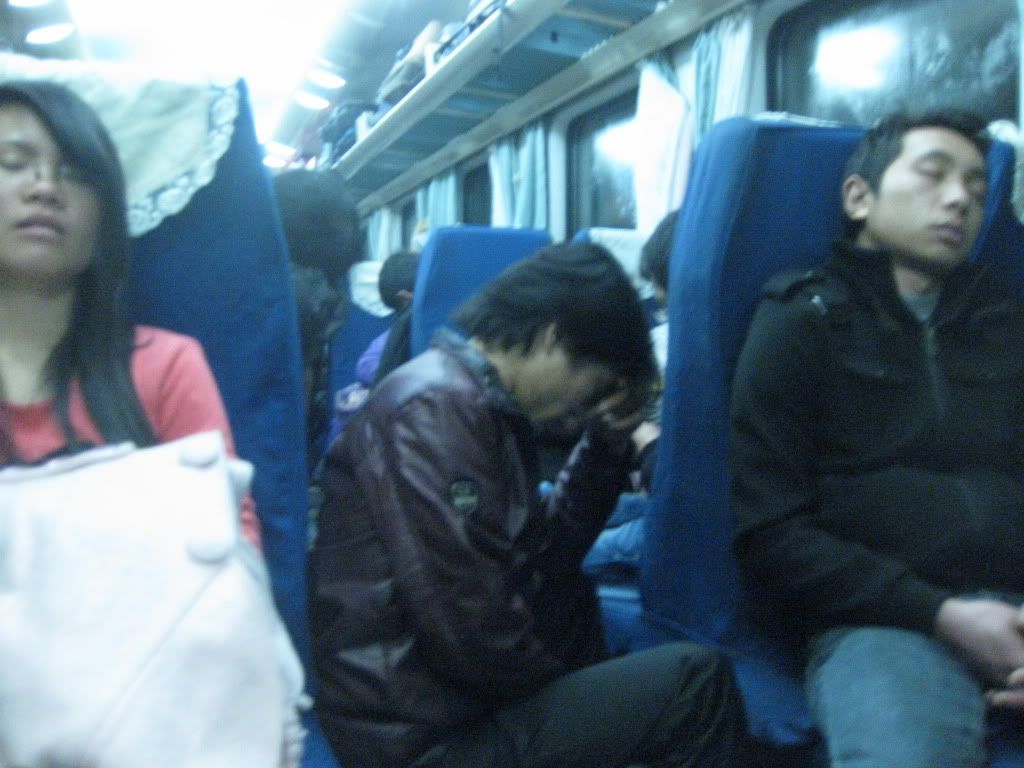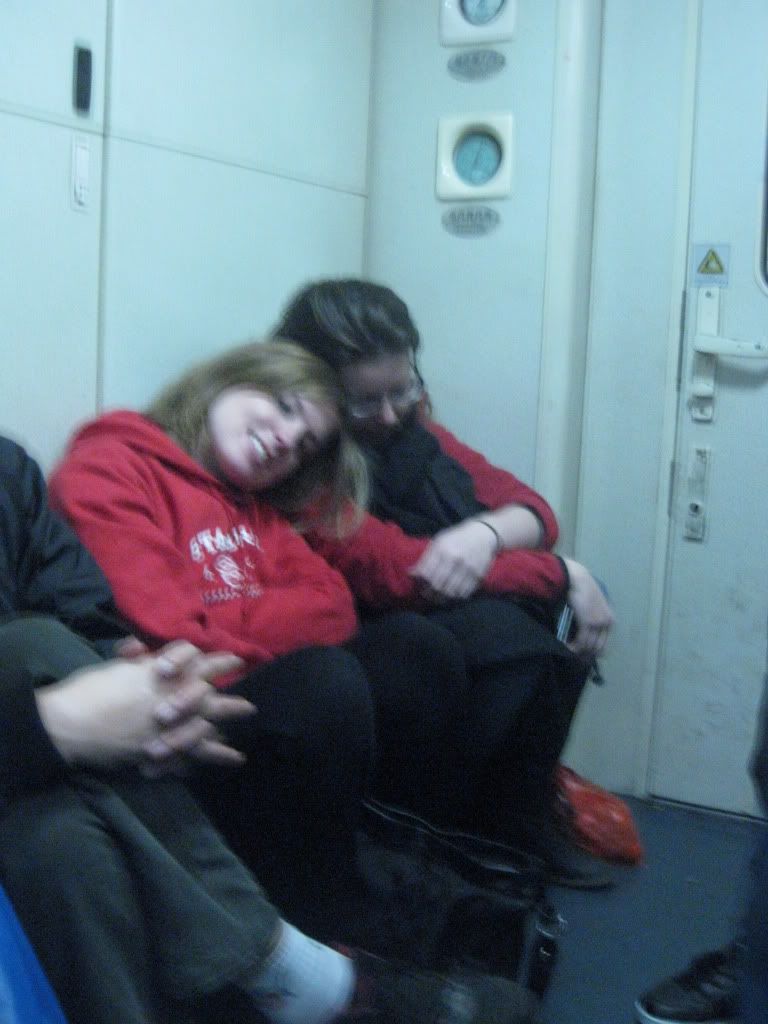Putting Myself Back Together Again
This week has been one in which things fell apart and slowly are getting put back together into a harmonious synergy. (This being China, the aspect of 'harmony' is key.) Things in need of harmonizing were: my body, my bike, and some clothing. I'll talk about body last since it included perhaps the most...."cultural" of methods.
-Bike tune-up from street-corner bike fix-it guy. When I arrived and began explaining what was wrong with the bike, the young woman at the cart got flustered and said she'd call in the big-boss, who was currently in a noodle shop just down the street. She called to him and soon a burly guy clad all in green army fatigues, plus a red-panda hat, came striding out and I began the poorly-worded litany again. This bike tune-up was long overdue partly because of knowing my inability to explain bike terminology. Even my bike English always ends up sounding like gobbledygook, liberally infused as it is with use of such technicalities as "thingamajig." Nonetheless my bike had issues and therefore must be fixed, so I prevailed and used the time-honored trick of pointing.
==> Eloquence: "This thing right here [point at the gears] has some problems. And sometimes it makes a bad sound. Also, these [point at gear shifters] have moved to below here [point at handlebars]; I fixed it in the past but now they've moved down again. And the seat is not very sturdy."
==>Result: Army fatigue / Panda-hat -clad bike fix-it guy grunted an assertion and pulled out tools to get to work. I got nervous when he pulled out a hammer (!) and squatted down next to the gears.... but thankfully he didn't start hacking at the gears, and instead delicately tapped. Thus reassured, I was even (almost) not phased as, without saying a word, he got on my bike and rode off down the street. Test ride. My bike is now functioning much better than it had been, and all for the hefty price of 10 kuai (US$1.40).
Just prior to adventures in bike tune-ups, I brought some clothes to be fixed to one of the ladies with a foot-powered sewing machine that set up shop at the bottom of my road. "I've been sitting here for 11 years!" she told me proudly. "You can't buy this kind of sewing machine anymore, even if you looked for it!"
==> I brought a sweatshirt that needed its zipper replaced, and 3 pairs of pants and long underwear with large and small rips to be repaired. Offered price: 25 kuai. "Here, choose a zipper. Which color do you want? These plastic ones cost 15 yuan. Here, how about this metal one?--it costs 18 yuan and is higher quality, but I'll still only charge you 25 yuan total." Deal.
However that still leaves the question of....

Body. Throughout these other fix-it errands, water-hauling, and market-going I had been sort of limping stiffly through town, being as my neck and back were still messed up from the previous week-and-a-half's travels overland. It didn't help that the return trip---though still significantly shorter and faster than the onward trip from Shangri-la to Chengdu--consisted of 14.5 hrs of train [overnight] + 1 hr city bus + 9 hrs long-distance bus [sleep overnight] + 3.3 hrs bus.
But this wasn't just any train ride...as Chinese trains in hard-sleeper class are quite nice...it was a hard-seat train ride!! The picture above gives an idea of what my reality was for 14.5 hrs of hard-seat overnight fun from Chengdu to Panzhihua. Actually this picture could represent any of those hours, including overnight, because--unlike in the hard or soft-sleeper classes--they never turn out the lights. Hard-seat is an extremely acceptable way to travel for any train ride up to ~5 hours or so. Sometimes--like on the way to Sanya in January--the seats are like diner booths, with 3-4 people assigned to each bench; and sometimes hard seat is like in the above picture, where the train has converted the hard-sleeper bunks into hard-seat class, but in which passengers are strictly forbidden from sleeping on said bunks! (oh the cruel twist.) Instead there are 4 people assigned to each lower bunk and luggage gets put on the middle bunk and (at least on this past train) one extraordinarily lucky person does get to sleep on the top bunk. On this trip I counted myself as minorly luckly for the sheer sake of snagging the seat nearest the window, thereby being able to lay my head down on the little table rather than having nothing at all to lean against.
But it could have been worse! So much worse! In fact I left Chengdu a full day later than intended, and on the absolute last day possible to even hope to get back to Shangri-la in time to make an appearance at work, to avoid the horrifying prospect of a "standing ticket." A standing ticket, a.k.a. a 无座票 (seat-less ticket) is exactly as it sounds. On the long, long trip overland to Sanya a few hours were spent in just such agony, made worse (Dear Reader did you think it couldn't get worse? mwhaha) by the fact of our train being delayed and our seatlessness happening from 2:30 a.m. to 4:15 a.m. (At which point we were fortunate enough to be able to squeeze out of that car, run down the train platform as fast as our sleep-deprived-addled bodies would carry us and our luggage through the mid-January chill, to be able to get back on the same exact train!, but in hard-sleeper class. Even despite the bedding being grimy and the bunk's previous occupant having left seed shells and a bag of orange peels on the bunk!, it was a bunk vs. a seatless existence. But I digress.)
Seatless class is exactly what it sounds like but costs the same as a hard-seat ticket (oh the irony). These poor people sit and lie down wherever they can: in between cars, in the sink room, in the smoking area, in the aisleway...Anywhere they can find a space. One older man lay down in the aisleway right outside my (comparatively comfortable) hard-seat compartment. It was very undignified, and I felt like offering him my seat ...except for the literally hundreds like him on the train. It is just as crowded as it sounds.
Seat-ed and seat-less people, middle-of-the-night trip leg on the way to Sanya:

Ingrid and Natalie rocking the seatlessness, positioned precariously underneath man getting hot water for his 方便面, ramen-noodle bowl (a staple food on Chinese trains). oops uploaded the wrong pic, but all the same:

This all resulted in the need for a body fix-up and saw me going to the T1betan Medicine Hospital twice this past week. It was a mildly terrifying experience, since as a 外国人 this is the sphere of littlest understanding and language. But the doctors were knowledgeable, and, as promised it was a very "cultural" experience. First of all, there's the differing notion of personal space. In the US if you went in for a dose of massage + acupuncture+ cupping you would most likely be in your own room. Not so in China, where you're in a shared room together with whoever else wanders in to gets treated. You can see up close as other people get poked with needles, grimace in pain, get their sore parts massaged, etc. And it absolutely is not impolite to watch. In turn other people watch procedures get done to you! During the 1st visit the doctor at one point asked my friend to close the door... though this didn't prevent curious Chinese people from looking through the wall of glass windows in at me to see what the foreigner was having done, nor to prevent the policeman lying on the bed next to me, having his foot worked on, from looking over at me if he so chose.
==>Result: Felt very shitty but slightly better after the 1st treatment, and much much better after the 2nd. A la the sketchy "bone-helping" pills from Kangding (see previous post), I now have been prescribed "blood-invigorating" pills. Whatever that means!